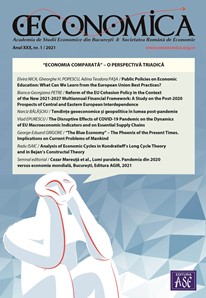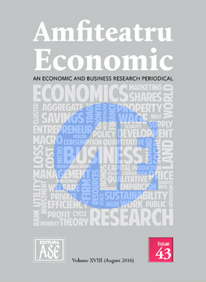
Is World War Three Upon Us? A Brief Reflection on the State of the World
It will not take more than a brief Google search to notice that this topic is the subject of a debate among analysts and journalists alike. Entering “is World War 3 coming” in the search bar will yield a plethora of authors and their diverse opinions. There is no shortage of modern-day Cassandras prophesizing Armageddon itself, as well as naysayers to dismiss such claims as unrealistic fear-mongering. In the aftermath of WW2, humanity was witness to a potentially nuclear interplay of the great powers, weary of any omens that would signal a catastrophic clash. The Cuban Missile Crisis of 1962 and, to a lesser extent, the Gulf War in 1991 raised many fears that the state of affairs would escalate into global warfare; indeed, these are the only two moments in history when the US Armed Forces alert system called DEFCON ever reached level 2, indicating high potential for a nuclear war and, consequently, a new world conflict.
In the more recent era, the Syrian Civil War and Ukraine’s internal turmoil signaled the onset of a new wave of turbulences, while Russia’s military incursion and subsequent annexation of Crimea sparked new forecasts of imminent war. Other spats and incidents – a near collision between a Chinese warship and an American vessel, military maneuverings near the Black Sea, a Russian jet shot down by the Turkish military, thinly veiled diplomatic threats over perceived encroachments on proprietary spheres of influence – all generate concerns as to how long it would take until the powder keg explodes.
Wary, worry, warlike prognosis
Much idle speculation can be made for one or the other, but that is not the purpose of this article. Instead, it will seek to highlight factors that may lead to a state of war and to gain an insight into what combination of circumstances could lead to a full-scale confrontation. One would imagine such a war to be a multi-front confrontation in several geographical theatres as it expands and draws in more actors, and alliances are forged. As war is what happens when diplomacy breaks down, World War III would be the culmination of a deteriorating international climate. Its onset would be the final exclamation mark to a series of events that would build up tension, enmity and uncertainty to the point where military intervention is viewed by one of the parties as the only acceptable recourse left for achieving their justified objectives. That, of course, is the most common view of the war, but is it the only one? We ought to first establish the basics of such a situation. Beyond any formal procedures on declaring war as dictated by the Hague Convention of 1907 and each state’s internal legislation, there are a number of conditions a country should meet in order to go to war.
To begin with, any state willing to go to war should have a strong and stable socio-political structure, not likely to yield to pressure and internal conflicts which would easily defeat the state from within. Next, in today’s increasingly globalized landscape featuring integration agreements and security treaties, a state that wants to declare open war would require a strong system of alliances – not only formal, but informal alliances as well, as geostrategic motivations may provide a much stronger impetus for military support, while the lack of such considerations may determine a formal ally to seek legal loopholes to avoid getting involved or refuse outright, based on public opposition. Strategic and reliable alliances are mandatory for opening hostilities. Furthermore, a state (as well as its allies) needs to have a powerful military advantage compared to its prospective adversaries – be it raw military power, positioning or a better capacity to weather the consequences of a military clash, a better performing economy, more significant energy supplies, bigger defense spending, a prior period of military accumulation and technical endowment etc.
Take Russia, for instance: its military actions against Georgia in 2008 and Ukraine in 2014 were undertaken against adversaries with weaker militaries, a certain level of political turmoil, and lacking the ability to muster allies to support their cause. On the other hand, it did not retaliate with force against Turkey when it shot down one of its jets in late 2015, given that Turkey has considerable military force, occupies a key geostrategic position for Europe and the US and is an important member of NATO; Russia resorted instead to economic sanctions and diplomatic retorts.
To be “just war” or just… war!?
As WW3 would most certainly be a war of alliances, it follows that it would be improbable for any power to unleash war upon another unless it can rely upon a network of strategic alliances, on the one hand, and unless it can count on its opponent’s alliances being significantly weaker, unreliable, or divided. Moreover, given the high costs of overseas military operations, it would be reasonable to assume that no open hostility would be initiated by any party unless the timing was right and their international economic and diplomatic opponents are unable to organize a coherent response. A global war between the greatest powers of our time is therefore likely to be preceded by political and diplomatic bickering among members of an informal or formal alliance – the sort that would lower their public or leadership’s trust in the union’s ability and willingness to safeguard their national defense. Also, an increase in military spending and defense budget allocations might be taken as a sign of countries bracing themselves for military operations.
Last but not least, there are always societal factors involved in conflict. Sun Tzu spoke of the “moral law” that causes the citizens of a state to support the decisions of the government, including war. Likewise, declaring a war without a seemingly just cause that the internal populace would embrace would lead in the long run to nefarious consequences for the states initiating war: internal divisions that would undermine war efforts from within, as well as a strengthened “moral law” among the populations of their adversaries that would hand the latter a significant advantage. Never do people more easily unite than when faced with a common enemy. Similarly, a war launched without an apparently solid cause would lead other foreign actors to deeply distrust and resent the initiator, with far-reaching consequences in international politics. Here, we can cite Germany’s tarnished image following WW2 and the painstaking efforts it took to repair it, or the US’ blemished reputation following its actions in Iraq.
Hard rock(ets) and pop support
Deep-seated enmities towards other countries, a feeling of injustice, oppression and denial of their rightful place in the world, a perceived threat against their security, or even the conviction that the adversaries are irredeemable villains that must be eradicated are all factors that can be capitalized upon in order to garner popular support, so it should be expected that the prelude to warfare would include increasingly overt propaganda and histrionic media campaigns among prospective combatants to incite the population against their enemies.
Some of these signs are present in the world. The United States’ military budget has increased gradually over the past few years, while Russia’s defense expenditures remain among the highest worldwide despite its financial troubles and China announced it would direct its defense spending towards its interests in the South China Sea. Over the past five years, relations between NATO, China and Russia have worsened over several international crises, such as the Arab Spring, the Syrian Civil War, the Ukraine Crisis or the Islamic State. The US has established military defense capabilities in Eastern Europe of a type previously dismissed in Russian-NATO agreements. The US apparently hopes to deter Russia’s interests in a renewed sphere of influence in Eastern Europe and respond to the threat perception of Russia in the region, whereas Russia sees it as a direct attempt to coerce it into humiliating submission, since the military bases in Eastern Europe offer potential logistical and tactical support for advancing NATO forces. Russia is turning its own gears of war, using the bombing of Islamic State positions in the Near East as a showcase for its capabilities and willingness to fight and take losses. Growing bitterness towards the West has been highlighted by recent polls among the Russian population, as approximately 70% of the population views the US, the European Union and Ukraine as enemies.
China, has sought to strengthen its position in the South China Sea with military reinforcements while sternly warning against involvement of the US in the region, given its geostrategic importance to China. The traditional US military presence already existing in Japan and South Korea, along with new agreements with countries like the Philippines, leads China to fear potential encirclement by the American military. In Europe, the refugee crisis has not only generated a humanitarian debacle for the leaders of the EU, but the divergent and occasionally conflicting responses to it also demonstrated the divisiveness of European collective governance.
Global warring or a new ice age?
Nonetheless, we do not have a war; not an overt one, anyway, as the actors involved seek to avoid a direct clash, given the existing economic interdependencies and the fact that, for the moment, neither challenging party has the definite upper hand. What we do have are four main themes of how hostilities are managed: deterrence, proxy wars, power projection and positional weakening. By deterrence, we understand actions undertaken to minimize threats and increase the opportunity costs for the opponent in proactively pursuing military efforts, such as the US anti-missile shield in Romania. Proxy wars are indirect confrontations, expressed by support awarded to one party in a given war, as it is the case of the Syrian Civil War, where NATO supports the non-Islamic State rebels, while Russia supports al-Assad’s government. Power projection is a display of a country’s military capabilities and a silent response to a perceived threat; Russia’s military campaign against the Islamic State and its provocations against NATO in the Baltic Sea serve as examples. Finally, positional weakening refers to moves a power makes to weaken another power’s hold in a region. The NATO invitation for Finland to join it is such a move, as well as China’s increasing military presence in the South China Sea. This also includes covert sabotage ops, such as cyber-attacks.
To conclude, while there are certainly signs of strained relationships between today’s superpowers and hotspots of armed conflict in the world, the general impression is that the critical mass required to erupt into global (possibly thermonuclear) war has not yet reached the necessary level or, at the very least, has not yet been given a trigger to establish hostilities. Instead of a World War III, it seems we have a Cold War II, in which the participating actors seek to win the race by more or less covertly undermining the advantages of the others. Yet, it is from such indirect spats that the greatest perils may come.








